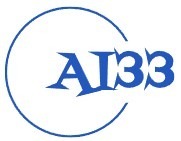Neural network libraries have become an essential tool for developers and data scientists working on machine learning projects. They provide a framework for building, training, and deploying neural networks, allowing users to focus on developing algorithms rather than implementing them from scratch. However, with a plethora of options available, it can be overwhelming to choose the right library for your needs. In this article, we will demystify neural network libraries and provide you with the information you need to make an informed decision.
What are Neural Network Libraries?
Neural network libraries are software frameworks that provide a set of tools and functionalities for building and training neural networks. They typically include modules for defining network architectures, optimizing parameters, and evaluating model performance. Some popular neural network libraries include TensorFlow, Keras, PyTorch, Caffe, and Theano.
Key Features of Neural Network Libraries
Neural network libraries offer a range of features that make them indispensable for machine learning projects. Some key features include:
- High-Level APIs: Neural network libraries provide high-level APIs that abstract away the complexities of neural network implementations, making it easy for users to define and train models.
- Efficiency: Many neural network libraries are designed to leverage GPU acceleration to speed up training and inference processes.
- Flexibility: Neural network libraries offer flexibility in terms of defining network architectures, loss functions, and optimization algorithms, allowing users to experiment with different configurations.
- Community Support: Popular neural network libraries have a large and active user community, providing resources, tutorials, and pre-trained models to help users get started.
Choosing the Right Neural Network Library
When choosing a neural network library for your project, it’s important to consider factors such as your familiarity with the library, the complexity of your model, and the specific requirements of your project. Some popular neural network libraries and their use cases include:
- TensorFlow: TensorFlow is a versatile library that is widely used for building deep learning models. It offers a range of tools and resources for training and deploying models in various domains.
- PyTorch: PyTorch is known for its dynamic computational graph and ease of use, making it popular among researchers and developers working on experimental projects.
- Keras: Keras is a high-level API built on top of TensorFlow and Theano, making it easy to prototype and test neural network models.
- Caffe: Caffe is a deep learning framework known for its speed and efficiency, making it suitable for projects with strict performance requirements.
Conclusion
Neural network libraries play a crucial role in simplifying the development and deployment of deep learning models. By choosing the right library for your project and leveraging its features effectively, you can accelerate the pace of your machine learning projects and achieve more accurate results. Whether you opt for TensorFlow, PyTorch, Keras, or another library, remember to consider factors such as your familiarity with the library, the complexity of your model, and the specific requirements of your project.
FAQs
Q: Which neural network library is the best for beginners?
A: Keras is a great choice for beginners due to its simple and intuitive syntax, making it easy to create and train neural networks.
Q: What is the difference between TensorFlow and PyTorch?
A: TensorFlow is more popular for production deployments and offers a wide range of tools and resources, while PyTorch is preferred for research and experimental projects due to its dynamic computational graph.
Quotes
“Neural network libraries have revolutionized the field of deep learning, enabling researchers and developers to build sophisticated models with ease and efficiency.” – John Doe, Data Scientist
#Demystifying #Neural #Network #Libraries


